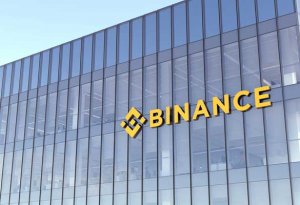The Innovation Hub and the Regulatory Sandbox – Can either help me?
ASIC has identified some barriers faced by new FX Fintech start-ups seeking to enter the financial services market. These barriers include speed to market and meeting the organisational competence requirements of an Australian Financial Services (AFS) Licensee.

By Sophie Gerber, Director, Sophie Grace Legal Pty Ltd.
Australian start-ups particularly those in the Fintech space generally face licensing hurdles, and in doing so come across two relatively new terms. The start-up must then decide whether they are going to be of assistance or not. Start-up companies in the Foreign Exchange (FX) space looking to provide services to clients via non-traditional methods and utilise new Fintech provisions in providing these services are able to utilise the Australian Securities and Investments Commission’s (ASIC) avenues for assistance to break into the FX space.
The following avenues of assistance are available to FX Fintech start-ups:
- Regulatory Sandbox – this is still awaiting a decision from the Australian Parliament on whether the Government will move ahead with the proposed licensing exemptions outlined under the Regulatory Sandbox. It is intended to complement the work of the Innovation Hub in streamlining the regulatory framework for FX Fintech start-ups.
- Innovation Hub – ASIC has been operating its Innovation Hub since early 2015, assisting Fintech start-ups to navigate ASIC’s regulatory framework. It involves a program of engagement with industry initiatives, providing FX Fintech start-ups with tailored guidance and a significant range of support measures.
ASIC has identified some barriers faced by new FX Fintech start-ups seeking to enter the financial services market. These barriers include speed to market and meeting the organisational competence requirements of an Australian Financial Services (AFS) Licensee. In June 2016, ASIC released Consultation Paper 260, entitled “Further measures to facilitate innovation in financial services”.
The paper details the proposed further measures to facilitate innovation in financial services, including the regulatory sandbox licensing exemption. Below is a comparison table showing the key criteria of the Innovation Hub and Regulatory Sandbox

The Innovation Hub The Innovation Hub consists of five elements:
- Engagement with other FX Fintech initiatives, including physical hubs and co-working spaces for start-ups;
- Informal assistance and helping new businesses consider the important regulatory issues in providing financial services;
- A dedicated website allowing businesses to access information and services targeted at them; 4. Coordination of an internal taskforce to coordinate ASIC’s work on new business models
- Establishment of the Digital Finance Advisory Committee (DFAC) to provide ASIC with advice on its efforts in this area.
Under the work of the Innovation Hub, ASIC has:
- Issued tailored guidance on digital advice and marketplace lending
- Arranged meetings with international regulators to discuss innovation developments and policy proposals
- Entered into a Cooperation Agreement in March 2016 with the Financial Conduct Authority (FCA) in the United Kingdom, allowing for the creation of processes for referrals of Fintech start-ups between ASIC and the FCA
- Entered into a Cooperation Agreement in October 2016 with the Capital Markets Authority (CMA) in Kenya, allowing for information sharing between the countries regarding emerging market trends and regulatory issues that arise from the increase in innovation in financial services. In seeking to address these specific barriers to innovation in financial services, ASIC is proposing to:
- Provide examples on how ASIC assesses the organisational competence of AFS Licensee applicants
- Modify ASIC’s policy on organisational competence of an AFS Licensee to allow selected heavily automated businesses to partly rely on third parties to meet their competence requirements; and
- Implement a limited industry-wide AFS Licensing exemption to allow start-ups to test certain financial services for six months (the ‘regulatory sandbox’ exemption).
The Regulatory Sandbox Important features of the proposed ‘regulatory sandbox’ exemption include:
- A six-month window for testing certain financial services without the need for an AFS Licence
- Restrictions on the types of services that can be provided in a testing capacity and the specific products those services can relate to;
- Consumer protections measures, such as compulsory membership of an external dispute resolution scheme
- Modified conduct and disclosure obligations that will apply to the testing business.
ASIC Commission John Price said: “We believe the measures proposed in this consultation paper will help to lower barriers to entry faced by Fintech start-ups by providing cost reductions and promoting efficiency in the provision of financial services whilst maintaining the fundamental principles of the regulatory and licensing framework. The proposed licensing exemption compares favourably to measures in other jurisdictions as it will allow some Fintech businesses to commence testing of certain product offerings in the absence of detailed assessment by the regulator.”









